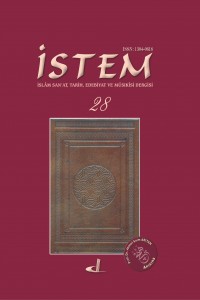Abstract
Turkish tombstones are the silent witnesses of our history. Our tombstones as a part of our architectural wealth are our legacy to the world’s heritage. Ever since the tombstones have been on the scene of our history they have been given great significance. The tombstones that no longer exist have left traces. In time, those traces served their own purpose. The tradition of tombstone monuments has been continued with the adoption of Islam by Turks. Turbeh, a tomb with a dome-shaped roof were being built. The creation of tombstones is a result of the beliefs depending on the region and period of time, as well as art traditions, economic and social conditions. Furthermore, tombstones serve to testify and document old Turkish martyrs. Due to various factors, the information contained in the inscription as well as the decorative features which are of great importance in the scope of the formation of tombstones, are disappearing as we speak. As a result of conscious efforts, today, the tombstones represent monuments of the past. In this study, our primary goal was to research and record the information about Isa-Bey’s Mosque, based on a limited research of the Mosque’s cemetery in the capital city of Bosnia and Herzegovina, Sarajevo, where a group of graves was examined and registered.
References
- Acun, Hakkı, Tüm Yönleri İle Çapanoğulları ve Eserleri, Ankara, 2005.
Abstract
Keywords
References
- Acun, Hakkı, Tüm Yönleri İle Çapanoğulları ve Eserleri, Ankara, 2005.
Details
| Journal Section | Research Articles |
|---|---|
| Authors | |
| Publication Date | December 29, 2016 |
| Submission Date | March 9, 2017 |
| Published in Issue | Year 2016 Issue: 28 |
This work is licensed under a Creative Commons Attribution-NonCommercial 4.0 International License (CC BY NC).


